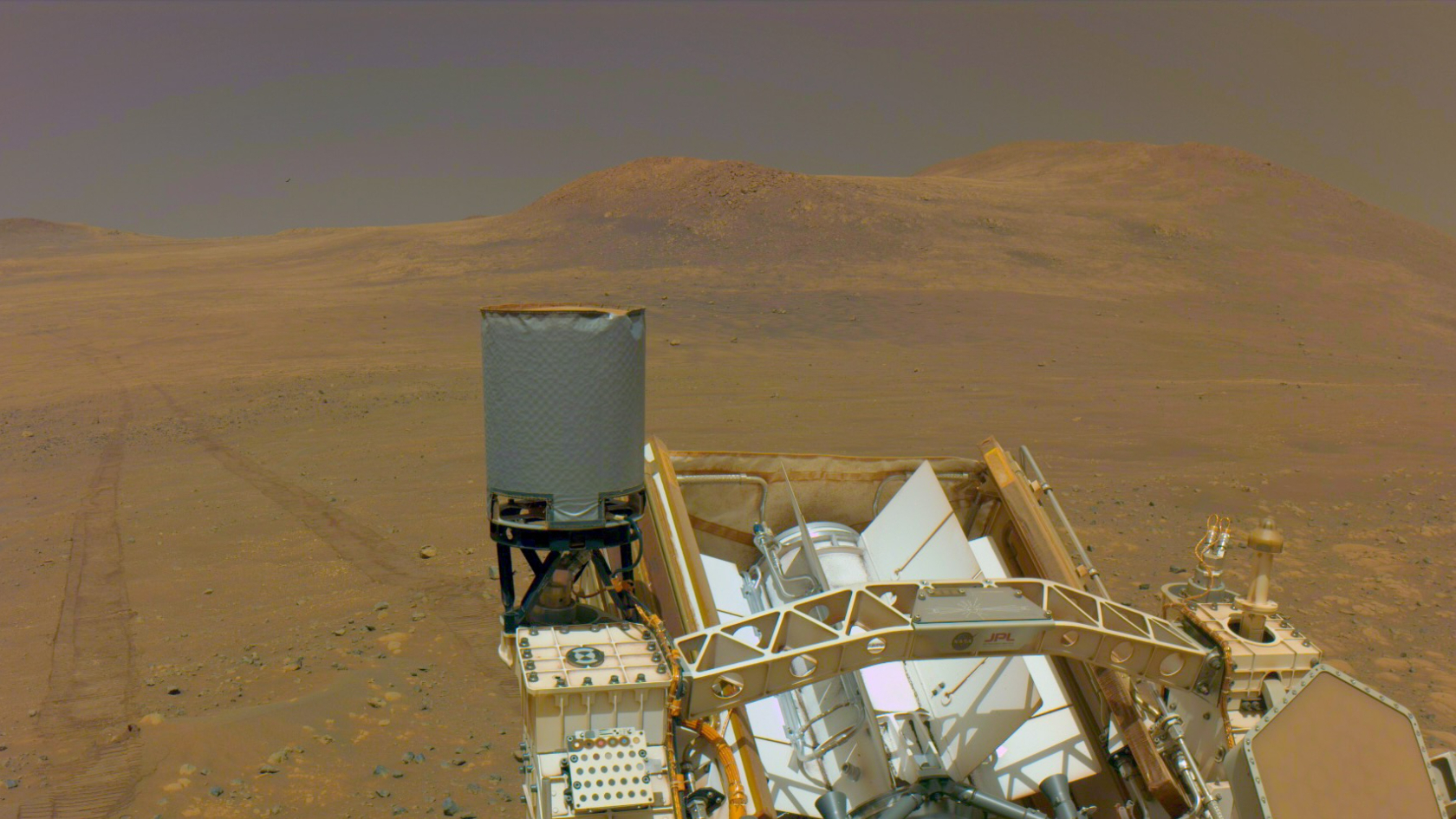Perseverance rover rolls onto 'Crocodile' plateau on Mars to hunt for super-old rocks
"The Krokodillen rocks formed before Jezero Crater was created, during Mars' earliest geologic period, the Noachian, and are among the oldest rocks on Mars."

NASA's Perseverance rover has made to a new region on Mars, which may contain some of the Red Planet's oldest and most interesting rocks.
Perseverance landed inside the 28-mile-wide (45 kilometers) Jezero Crater in February 2021, on a mission to search for past signs of Mars life and collect dozens of samples for future return to Earth.
The car-sized rover has covered a lot of ground in the past four-plus years, and it has now reached yet another new spot — a plateau of rocky outcrops that the mission team named Krokodillen, after a mountain ridge on Prins Karls Forland island in Norway. (Krokodillen means "crocodile" in Norwegian.)
Krokodillen, which covers about 73 acres (30 hectares), is a boundary of sorts between the ancient rocks of Jezero's rim and the plains beyond. Earlier work suggest that it harbors clay minerals, which form in the presence of liquid water.
If Perseverance finds more such minerals throughout Krokodillen, it would suggest that the area may have been habitable long ago — an intriguing thought, given the age of the rocks.
"The Krokodillen rocks formed before Jezero Crater was created, during Mars' earliest geologic period, the Noachian, and are among the oldest rocks on Mars," Ken Farley, deputy project scientist for Perseverance from the California Institute of Technology in Pasadena, said in a statement on Monday (May 19).
"If we find a potential biosignature here, it would most likely be from an entirely different and much earlier epoch of Mars evolution than the one we found last year in the crater with 'Cheyava Falls,'" Farley added.
Breaking space news, the latest updates on rocket launches, skywatching events and more!
Cheyava Falls is an arrowhead-shaped rock that Perseverance studied in 2024. The rover found chemical signatures and structures that are consistent with the activity of ancient microbial life. But such features may also have been produced by geological processes, so they remain potential rather than definitive biosignatures.
Indeed, confirming the presence of current or past life on Mars may be too tall a task for Perseverance, given its limited scientific payload. That's why the rover is collecting samples that can be returned to Earth for study in well-equipped labs around the globe. (The future of Mars sample return is currently in doubt, however; the Trump administration's 2026 budget request would cancel the current plan to bring Perseverance's collected material home.)
And speaking of sampling: The Perseverance team is implementing a new strategy going forward, according to the Monday statement. The rover will now leave some of its newly filled tubes unsealed, so it can dump out collected samples in favor of potentially more exciting ones if need be. The team is taking this tack because Perseverance is getting low on unsealed tubes and still has a lot of intriguing ground to cover.
The rover carries 43 tubes, 38 of which are for collecting samples. (The other five are "witness" tubes that are designed to help the mission team determine if any materials in the collected samples are contaminants from Earth.)
Perseverance has filled all but seven of its sample tubes at this point, according to Perseverance acting project scientist Katie Stack Morgan of NASA's Jet Propulsion Laboratory in Southern California.
"We have been exploring Mars for over four years, and every single filled sample tube we have on board has its own unique and compelling story to tell," she said in the same statement. "This strategy allows us maximum flexibility as we continue our collection of diverse and compelling rock samples."

Michael Wall is a Senior Space Writer with Space.com and joined the team in 2010. He primarily covers exoplanets, spaceflight and military space, but has been known to dabble in the space art beat. His book about the search for alien life, "Out There," was published on Nov. 13, 2018. Before becoming a science writer, Michael worked as a herpetologist and wildlife biologist. He has a Ph.D. in evolutionary biology from the University of Sydney, Australia, a bachelor's degree from the University of Arizona, and a graduate certificate in science writing from the University of California, Santa Cruz. To find out what his latest project is, you can follow Michael on Twitter.
You must confirm your public display name before commenting
Please logout and then login again, you will then be prompted to enter your display name.
